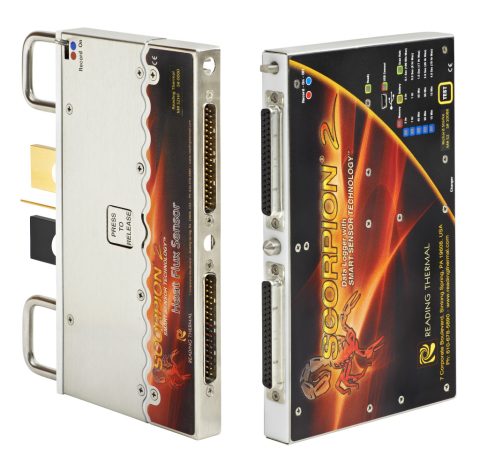By utilizing thermal profiling systems from Reading Thermal to measure critical parameters during your baking process, you will gather information about temperature, heat flux, air velocity, and humidity that can be used to make reliable data-based decisions about your processes and products.
Reading Thermal, a product brand of Reading Bakery Systems, is located in Sinking Spring, Pennsylvania. Our heat transfer experts have studied and measured the commercial baking process for nearly 25 years.
Why Thermal Profiling is Important
The characteristics of baked goods are defined by the amount and type of heat applied during the baking process, and each oven bakes differently than another. Analyzing and controlling the differences are critical to understanding how your finished products will be affected. The benefits include:
- Fast troubleshooting
- Improved product quality, texture, and shelf life
- Greater productivity
- Reduced energy costs
- Improved food safety and FSMA compliance
- Efficient development of new processes
Important Sensor Measurements
When you connect our smart sensors and arrays to the SCORPION® 2 Profiling System and send them through the oven with your product, the measurement system will capture the four main baking parameters:
- Temperature (air, band, and product core): Oven temperature affects oven spring, drying/dehydration, and color formation during baking. Insufficient or excessive heat can lead to undesirable changes in taste and texture. The Scorpion® 2 Temperature Sensor Array measures temperatures at the product level, in fixed positions across the conveyor, and provides you with a precise picture of temperatures from side to side and end to end.
- Heat flux (energy transfer): Some product characteristics can be defined by the amount and type of heat applied during the baking process. The differences explain why all ovens bake differently. And analyzing and controlling these differences is essential for understanding how the finished characteristics of your products will be impacted. The SCORPION® 2 Heat Flux Sensor measures radiant and heat fluxes at the product level and displays the results in Btu/hr·ft2 or convective W/m2.
- Humidity: Humidity denotes the amount of water vapor in the air. As your products bake, they use the available moisture in your oven. Without humidity, product quality and texture will not turn out as you expected. Oven humidity that is too high can lighten the crust color of baked goods and prevent burning. Lower humidity typically results in crustier bread. Global bakeries trust the SCORPION® 2 Digital Humidity Sensor to accurately measure the absolute moisture content of the thermal environment in heating and cooling processes.
- Air Velocity (airflow): Air velocity refers to the airflow inside the oven. This measurement is important because, along with other parameters, air velocity influences the coloration, texture, firmness, and baking time of your final product. The new SCORPION®2 Digital Air Velocity Array offers the premier way to study airflow in your baking, cooling, or freezing process. This fundamental redesign provides a faster responding, higher accuracy method of tracking the air velocity of the local environment.
If you are experiencing inconsistent product quality, learn how to optimize your baking process with thermal profiling systems from Reading Thermal. Industrial bakeries count on the state-of-the-art SCORPION® 2 Data Logger and our various sensors and sensor arrays. Reach out to us online or call our headquarters in Sinking Spring, Pennsylvania, at (610) 678-5890 Ext. 2 to learn more about our innovative products.

